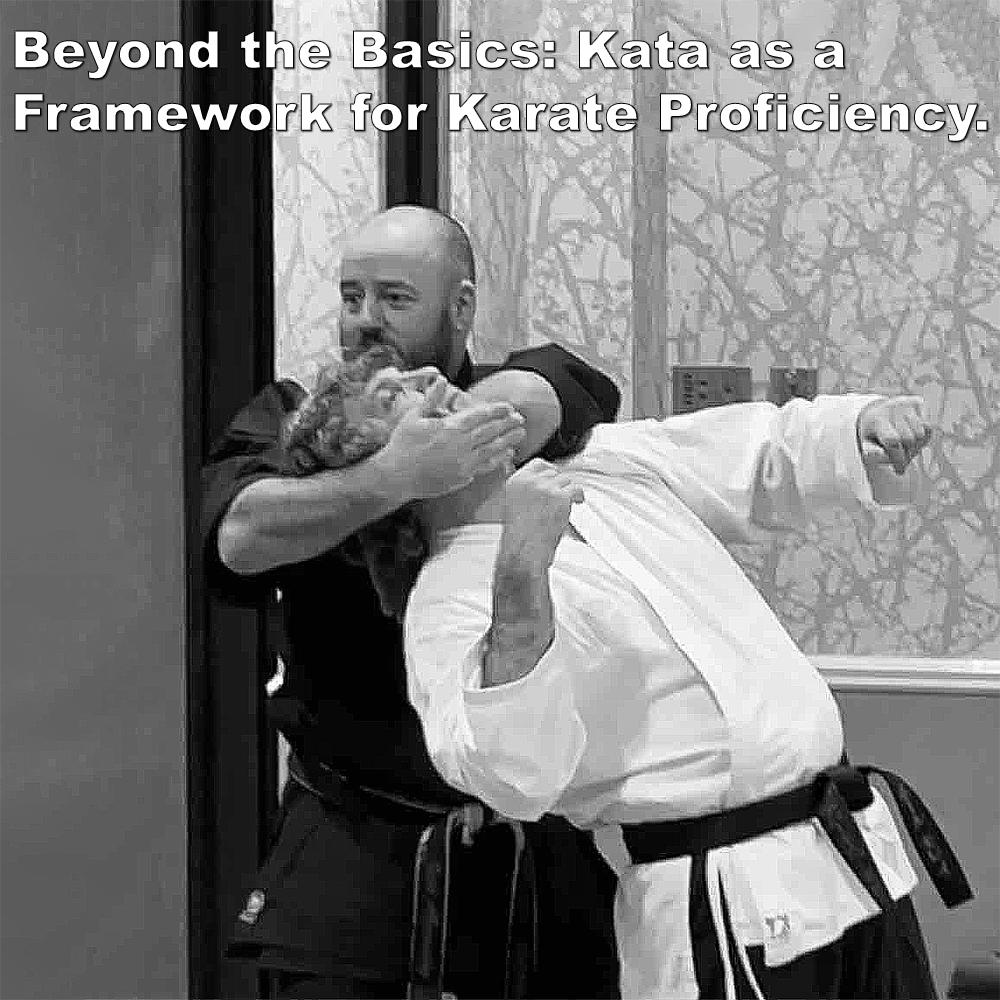
Beyond the Basics: Kata as a Framework for Karate Proficiency.
Posted by ADAM CARTER on AUG 28, 2024

Beyond the Basics: Kata as a Framework for Karate Proficiency.
(Approx 2 minute 30 second read)
New karate students typically start by learning a block, a stance, a punch, a kick. Over time, their knowledge expands as they practice more of the same. They might also be introduced to simple escapes or self-defense techniques, followed by block and counter drills with a partner, moving across the dojo floor in various combinations. Eventually though, they are introduced to kata.
This progression – from basics to solo practice, to partner drills, and finally to kata – is how most learn karate, and how many teach it.
From a student’s perspective, most of what’s taught is new and accepted without critical evaluation. Everything before kata is often grouped into the ‘basics’ category – the foundational building blocks of karate. When first introduced to kata, it might seem like a structured pattern of these basics, perhaps just another tool to practice those movements, or something to be learned for grading or competition.
To the student, kata can appear secondary, especially when they notice that many movements aren’t used in sparring.
Beginners are often taught the way their instructors were. Believing in the validity of what they learned, they want to pass it along, following tradition. The material and methods are rarely questioned.
As instructors, it’s essential to consider how kata and basics are presented to students. Is there a deep understanding of their purpose, or are we merely perpetuating a cycle of unexamined traditions? Reflecting on teaching methods ensures that our students gain not just technical skills but also a true appreciation of karate’s depth and practical value.
Kata is often overlooked as the true templates of karate. While it’s true that basics are derived from kata, teaching basics alone doesn’t capture the full essence of kata. The issue lies in how you perceive kata, which can significantly limit your progress and understanding.
Many dismiss information that doesn’t fit their preconceived ideas. Movements are accepted at face value, never considering other possible applications.
This mindset, formed early in training, can prevent you from seeing beyond the basics, even as you become more experienced.
Practitioners often struggle to see kata as more than just a series of basic techniques. This narrow view makes it difficult to recognize kata as a source of deeper knowledge. Viewing movements as fixed – like insisting a punch is just a punch – limits understanding of their versatility and multiple applications.
There are many ways to view kata: as a requirement for grading, a tool for tournament competition, or a way to build fitness. However, you can also choose to see kata as a template – a framework from which to learn deeply, not just something to perform. The choice is yours.
If you decide to use kata this way, you’ll need to reconsider certain aspects. For example, the names of techniques often limit understanding, making it hard to see beyond the initial application. Just as a cup can be used for more than just drinking water, kata movements can have multiple applications beyond their given names.
Many people focus so heavily on blocks, strikes, and kicks that they overlook opportunities for closer-range techniques like throws, joint locks, and chokes. The tendency is to interpret everything this way simply because that’s how they were taught.
But kata, as a template, offers more than just a series of movements to memorize. It’s a gateway to understanding the deeper principles of karate – a guide that invites you to explore, question, and adapt, opening the door to endless possibilities.
Written by AC.
![]() Photo Credit: With thanks to Iain Abernethy.
Photo Credit: With thanks to Iain Abernethy.
